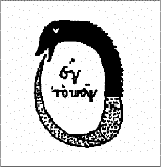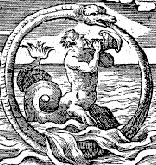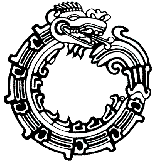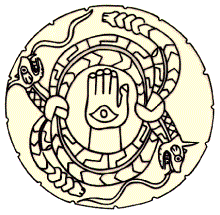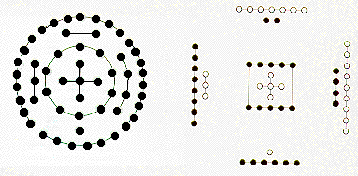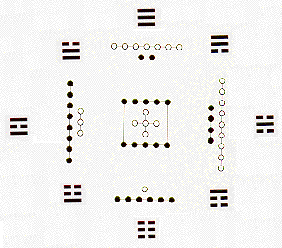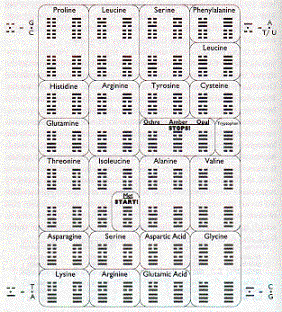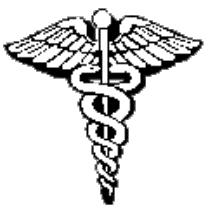
Friday, February 25, 2011
Wednesday, February 23, 2011
Shaun Monson On The Three Stages of Truth

Betta Pic of the Day - Rain
Animals, Whom We Have Made Our Slaves

Fellow Prisoners of the Splendour and the Travail

Monday, February 21, 2011
Quote of the Day
Friday, February 18, 2011
Prehistoric Shark Found in Japan
Quote of the Day

Betta Pic of the Day - Gabriel
Betta Art - Icy
Fast Food Nation Trailer
(Sporadicity!)
Tuesday, February 15, 2011
Altruism in Animals - Must Watch!
Owen and Mzee

Owen and Mzee are a hippopotamus and a tortoise, respectively, that became the subject of much media attention after forming a unique bond of friendship.
A baby hippopotamus, Owen, was orphaned in the Indian Ocean off the coast of Kenya near Malindi during the 2004 Indian Ocean earthquake on December 26, 2004. The baby hippo, weighing 600 pounds (270 kg), was stranded on a large rock not far from shore. He was finally rescued during a day long effort by nearly 1,000 villagers using shark nets. Owen's namesake is a French student volunteer with the KWS named Owen Saubion, who finally tackled the hippo during the rescue.
Owen was taken to Haller Park, a restored limestone quarry near Mombasa owned by Lafarge Eco Systems' East African firm, Bamburi Cement. He was released into a large wooded penned-in area that included a pond and a co-inhabitant − a 700-pound (320 kg), 130-year-old Aldabran tortoise named Mzee (Swahili for "old man").
Owen immediately bonded to Mzee and would crouch behind him. However, Mzee initially resisted Owen's overtures. Over time, the old tortoise came to accept the young hippo, who began to mimic his adoptive parent. Gradually, Mzee taught Owen, who was a nursing calf, what to eat and where to sleep.
In the first year, the two became inseparable companions who ate, slept, swam, and played together. Owen often played with the old tortoise by jumping on Mzee's back, scratching the old tortoise on the neck, and in many other ways. They surprised scientists with the strength of what appeared to be a genuine bond, as well as with the unique vocal communication that developed between them.
Owen and Mzee became worldwide celebrities as a result of their astonishing behavior, captured on film and video primarily by BBC photographer Peter Greste. Two picture books,Owen and Mzee: The true story of a remarkable friendship and Owen & Mzee: Language Of Friendship, both published by Scholastic Press, and authored by Isabella Hatkoff, Craig Hatkoff, and Paula Kahumbu were released in February 2006 and January 2007.
Owen and Mzee were also the subject of children's musician Marla Lewis's song 'Will You Be My Mom?', released on her 2007 album 'I Love To Talk To Plants', as well as Judy Feeney's song 'Owen and Mzee,' released on her 2007 album 'The Ants' Dance.'
As of March 2007, Mzee has been removed from the enclosure. A female hippopotamus named Cleo has been added to provide companionship for Owen. Due to Cleo's rough behavior with the other tortoises, a decision was made to remove the tortoises. This has resulted in Owen and Mzee living apart, but their friendship, which lasted for over two years, continues to inspire people from all over the world. Owen seems to be adapting to his new companion and it is possible that Owen and Cleo will have offspring when he reaches maturity.
Monday, February 14, 2011
Lessons on Water - How to Restructure and Heal Our Water

WATER is a sacred, liquid-crystal information carrying harmonization of molecules [light = information]. It is the essence of life-energy manifest into material form.

Cool Desktop Wallpapers
Saturday, February 12, 2011
Beauty of Transformation - Little Fish
"You have a New Name," Called the Frog. "You are Dragon!"

The Story of Jumping Mouse
He was Busy Mouse, Searching Everywhere, Touching his Whiskers to the Grass, and Looking. He was Busy as all Mice are, Busy with Mice things. But Once in a while he would Hear an Odd Sound. He would Lift his Head, Squinting hard to See, his Whiskers Wiggling in the air, and he would Wonder.
One Day he Scurried up to a fellow Mouse and asked him, "Do you Hear a Roaring in your Ears, my Brother?"
"No, no," answered the Other Mouse, not Lifting his Busy Nose from the Ground. "I Hear Nothing. I am Busy now. Talk to me Later."
He asked Another Mouse the same Question and the Mouse Looked at him Strangely.
"Are you Foolish in your Head? What Sound?" he asked and Slipped into a Hole in a Fallen Cottonwood Tree.
The little Mouse shrugged his Whiskers and Busied himself again, Determined to Forget the Whole Matter. But there was that Roaring again. It was faint, very faint, but it was there! One Day, he decided to investigate the Sound just a little. Leaving the Other Busy Mice, he Scurried a little Way away and Listened again. There It was! He was Listening hard when suddenly, Someone said Hello.
"Hello, little Brother," the Voice said, and Mouse almost Jumped right Out of his Skin. He Arched his Back and Tail and was about to Run.
"Hello," again said the Voice. "It is I, Brother Raccoon." And sure enough, It was! "What are you Doing Here all by yourself, little Brother?" asked the Raccoon. The Mouse blushed, and put his Nose almost to the Ground. "I Hear a Roaring in my Ears and I am Investigating it," he answered timidly.
"A Roaring in your Ears?" replied the Raccoon as he Sat Down with him. "What you Hear, little Brother, is the River."
"The River?" Mouse asked curiously. "What is a River?"
"Walk with me and I will Show you the River," Raccoon said.
Little Mouse was terribly Afraid, but he was Determined to Find Out Once and for All about the Roaring.
"I can Return to my Work," he thought, "after this thing is Settled, and possibly this thing may Aid me in All my Busy Examining and Collecting. And my Brothers All said it was Nothing. I will Show them. I will Ask Raccoon to Return with me and I will have Proof."
"All right Raccoon, my Brother," said Mouse. "Lead on to the River. I will Walk with you."
Little Mouse Walked with Raccoon. His little Heart was Pounding in his Breast. The Raccoon was Taking him upon Strange Paths and little Mouse Smelled the scent of many things that had Gone by this Way. Many times he became so Frightened he almost Turned Back. Finally, they Came to the River! It was Huge and Breathtaking, Deep and Clear in Places, and Murky in Others. Little Mouse was unable to See Across it because it was so Great. It Roared, Sang, Cried, and Thundered on its Course. Little Mouse Saw Great and Little Pieces of the World Carried Along on its Surface.
"It is Powerful!" little Mouse said, Fumbling for Words.
"It is a Great thing," answered the Raccoon, "but here, let me Introduce you to a Friend."
In a Smoother, Shallower Place was a Lily Pad, Bright and Green. Sitting upon it was a Frog, almost as Green as the Pad it sat on. The Frog's White Belly stood out Clearly.
"Hello, little Brother," said the Frog. "Welcome to the River."
"I must Leave you Now," cut in Raccoon, "but do not Fear, little Brother, for Frog will Care for you Now." And the Raccoon Left, Looking along the River Bank for Food that he might Wash and Eat.
Little Mouse Approached the Water and Looked into it. He saw a Frightened Mouse Reflected there.
"Who are you?" little Mouse asked the Reflection. "Are you not Afraid, being that Far out into the Great River?"
"No," answered the Frog, "I am not Afraid. I have been Given the Gift from Birth to Live both Above and Within the River. When Winter Man Comes and Freezes this Medicine, I cannot be Seen. But all the while Thunderbird Flies, I am here. To Visit me, One must Come when the World is Green. I, my Brother, am the Keeper of the Water."
"Amazing!" little Mouse said at last, again Fumbling for Words.
"Would you like to have some Medicine Power?" Frog asked.
"Medicine Power? Me?" asked little Mouse. "Yes, yes! If it is Possible."
"Then Crouch as Low as you Can, and then Jump as High as you are Able! You will have your Medicine!" Frog said.
Little Mouse did as he was Instructed. He Crouched as Low as he Could and Jumped. And when he did, his Eyes Saw the Sacred Mountains.
Little Mouse could hardly Believe his Eyes. But there They were! But then he Fell back to Earth, and he Landed in the River!
Little Mouse became Frightened and Scrambled back to the Bank. He was Wet, and Frightened nearly to Death.
"You have Tricked me," little Mouse Screamed at the Frog.
"Wait," said the Frog. "You are not Harmed. Do not let your Fear and Anger Blind you. What did you See?"
"I," Mouse stammered, "I, I Saw the Sacred Mountains!"
"And you have a New Name!" Frog said. "It is Jumping Mouse."
"Thank you. Thank you," Jumping Mouse said, and Thanked him again. "I want to Return to my People and Tell them of this thing that has Happened to me."
"Go. Go then," Frog said. "Return to your People. It is Easy to Find them. Keep the Sound of the Medicine River to the Back of your Head. Go Opposite to the Sound and you will Find your Brother Mice."
Jumping Mouse Returned to the World of the Mice. But he Found Disappointment. No One would Listen to him. And because he was Wet, and had no Way of explaining it because there had been no Rain, many of the other Mice were Afraid of him. They believed he had been spat from the Mouth of Another Animal that had Tried to Eat him. And they all Knew that if he had not been Food for the One who Wanted him, then he must also be Poison for them.
Jumping Mouse Lived again among his People, but he could not forget his Vision of the Sacred Mountains.
The Memory burned in the Mind and Heart of Jumping Mouse, and One Day he Went to the Edge of the Place of Mice and Looked out onto the Prairie. He Looked up for Eagles. The Sky was Full of many Spots, each One an Eagle. But he was Determined to Go to the Sacred Mountains. He Gathered All of his Courage and Ran just as Fast as he Could onto the Prairie. His little Heart Pounded with Excitement and Fear.
He Ran until he Came to a Stand of Sage. He was Resting and trying to Catch his Breath when he Saw an Old Mouse. The Patch of Sage Old Mouse Lived in was a Haven for Mice. Seeds were Plentiful and there was Nesting Material and many things to be Busy with.
"Hello," said Old Mouse. "Welcome."
Jumping Mouse was Amazed. Such a Place and such a Mouse. "You are Truly a great Mouse," Jumping Mouse said with all the Respect he could Find. "This is Truly a Wonderful Place. And the Eagles cannot See you here, either," Jumping Mouse said.
"Yes," said Old Mouse, "and One can See All the Beings of the Prairie here: the Buffalo, Antelope, Rabbit, and Coyote. One can See them All from here and Know their Names."
"That is Marvellous," Jumping Mouse said. "Can you also See the River and the Great Mountains?"
"Yes and No," Old Mouse Said with Conviction. "I Know of the Great River. But I am Afraid that the Great Mountains are only a Myth. Forget your Passion to See Them and Stay here with me. There is Everything you Want here, and it is a Good Place to Be."
"How can he Say such a thing?" Thought Jumping Mouse. "The Medicine of the Sacred Mountains is Nothing One can Forget."
"Thank you very much for the Meal you have Shared with me, Old Mouse, and also for sharing your Great Home," Jumping Mouse said. "But I must Seek the Mountains."
"You are a Foolish Mouse to Leave here. There is Danger on the Prairie! Just Look up there!" Old Mouse said, with even more Conviction. "See all those Spots! They are Eagles, and they will Catch you!"
It was hard for Jumping Mouse to Leave, but he Gathered his Determination and Ran hard Again.
The Ground was Rough. But he Arched his Tail and Ran with All his Might. He could Feel the Shadows of the Spots upon his Back as he Ran. All those Spots! Finally he Ran into a Stand of Chokecherries. Jumping Mouse could hardly Believe his Eyes. It was Cool there and very Spacious. There was Water, Cherries and Seeds to Eat, Grasses to Gather for Nests, Holes to be Explored and many, many Other Busy Things to do. And there were a great many things to Gather.
He was Investigating his New Domain when he Heard very Heavy Breathing. He Quickly Investigated the Sound and Discovered its Source. It was a Great Mound of Hair with Black Horns. It was a Great Buffalo. Jumping Mouse could hardly Believe the Greatness of the Being he Saw Lying there before him. He was so large that Jumping Mouse could have Crawled into One of his Great Horns. "Such a Magnificent Being," Thought Jumping Mouse, and he Crept Closer.
"Hello, my Brother," said the Buffalo. "Thank you for Visiting me."
"Hello, Great Being," said Jumping Mouse. "Why are you Lying here?"
"I am Sick and I am Dying," the Buffalo said, "And my Medicine has Told me that only the Eye of a Mouse can Heal me. But little Brother, there is no such Thing as a Mouse."
Jumping Mouse was Shocked. "One of my Eyes!" he Thought, "One of my Tiny Eyes." He Scurried back into the Stand of Chokecherries. But the Breathing came Harder and Slower.
"He will Die," Thought Jumping Mouse, "If I do not Give him my Eye. He is too Great a Being to Let Die."
He Went Back to where the Buffalo Lay and Spoke. "I am a Mouse," he said with a Shaky Voice. "And you, my Brother, are a Great Being. I cannot Let you Die. I have Two Eyes, so you may have One of them."
The minute he had Said it, Jumping Mouse's Eye Flew Out of his Head and the Buffalo was Made Whole. The Buffalo Jumped to his Feet, Shaking Jumping Mouse's Whole World.
"Thank you, my little Brother," said the Buffalo. "I Know of your Quest for the Sacred Mountains and of your Visit to the River. You have Given me Life so that I may Give-Away to the People. I will be your Brother Forever. Run under my Belly and I will Take you right to the Foot of the Sacred Mountains, and you need not Fear the Spots. The Eagles cannot See you while you Run under Me. All they will see will be the Back of a Buffalo. I am of the Prairie and I will Fall on you if I Try to Go up into the Mountains."
Little Mouse Ran under the Buffalo, Secure and Hidden from the Spots, but with only One Eye it was Frightening. The Buffalo's Great Hooves Shook the Whole World each time he took a Step. Finally they Came to a Place and Buffalo Stopped.
"This is Where I must Leave you, little Brother," said the Buffalo.
"Thank you very much," said Jumping Mouse. "But you Know, it was very Frightening Running under you with only One Eye. I was Constantly in Fear of your Great Earth-Shaking Hooves."
"Your Fear was for Nothing," said Buffalo. "For my Way of Walking is the Sun Dance Way, and I Always Know where my Hooves will Fall. I now must Return to the Prairie, my Brother. You can Always Find me there."
Jumping Mouse Immediately Began to Investigate his New Surroundings. There were even more things here than in the Other Places, Busier things, and an Abundance of Seeds and Other things Mice Like. In his Investigation of these things, Suddenly he Ran upon a Gray Wolf who was Sitting there doing absolutely Nothing.
"Hello, Brother Wolf," Jumping Mouse said.
The Wolf's Ears Came Alert and his Eyes Shone. "Wolf! Wolf! Yes, that is what I am, I am a Wolf!" But then his mind Dimmed again and it was not long before he Sat Quietly again, completely without Memory as to who he was. Each time Jumping Mouse Reminded him who he was, he became Excited with the News, but soon would Forget again.
"Such a Great Being," thought Jumping Mouse, "but he has no Memory."
Jumping Mouse Went to the Center of this New Place and was Quiet. He Listened for a very long time to the Beating of his Heart. Then Suddenly he Made up his Mind. He Scurried back to where the Wolf sat and he Spoke.
"Brother Wolf," Jumping Mouse said . . . .
"Wolf! Wolf," said the Wolf . . . .
"Please, Brother Wolf," said Jumping Mouse, "Please Listen to me. I Know what will Heal you. It is One of my Eyes. And I Want to Give it to you. I am only a Mouse. Please Take it."
When Jumping Mouse Stopped Speaking his Eye Flew out of his Head and the Wolf was made Whole.
Tears Fell down the Cheeks of Wolf, but his little Brother could not See them, for Now he was Blind
. "You are a Great Brother," said the Wolf, "for Now I have my Memory. But Now you are Blind. I am the Guide into the Sacred Mountains. I will Take you there. There is a Great Medicine Lake there. The most Beautiful Lake in the World. All the World is Reflected there. The People, the Lodges of the People, and All the Beings of the Prairies and Skies."
"Please Take me there,' Jumping Mouse said.
The Wolf Guided him through the Pines to the Medicine Lake. Jumping Mouse Drank the Water from the Lake. The Wolf Described the Beauty to him.
"I must Leave you here," said Wolf, "for I must Return so that I may Guide Others, but I will Remain with you as long as you Like."
"Thank you, my Brother," said Jumping Mouse. "But although I am Frightened to be Alone, I Know you must Go so that you may Show Others the Way to this Place."
Jumping Mouse Sat there Trembling in Fear. It was no use Running, for he was Blind, but he Knew an Eagle would Find him Here. He Felt a Shadow on his Back and Heard the Sound that Eagles Make. He Braced himself for the Shock. And the Eagle Hit! Jumping Mouse went to Sleep.
Then he Woke Up. The surprise of being Alive was Great, but Now he could See! Everything was Blurry, but the Colors were Beautiful.
"I can See! I can See!" said Jumping Mouse over again and again.
A Blurry Shape Came toward Jumping Mouse. Jumping Mouse Squinted hard but the Shape remained a Blur.
"Hello, Brother," a Voice said. "Do you Want some Medicine?"
"Some Medicine for me?" asked Jumping Mouse. "Yes! Yes!"
"Then Crouch down as Low as you Can," the Voice said, "and Jump as High as you Can."
Jumping Mouse did as he was Instructed. He Crouched as Low as he Could and Jumped! The Wind Caught him and Carried him Higher.
"Do not be Afraid," the Voice called to him. "Hang on to the Wind and Trust!"
Jumping Mouse did. He Closed his Eyes and Hung on to the Wind and it Carried him Higher and Higher. Jumping Mouse Opened his Eyes and they were Clear, and the Higher he Went the Clearer they Became. Jumping Mouse Saw his Old Friend upon a Lily Pad on the Beautiful Medicine Lake. It was the Frog.
"You have a New Name," Called the Frog. "You are Eagle!"

Chakras
Thursday, February 10, 2011
2012: The Year of the Dragon

scarce reached by gods, the years' rough haggard mother,
stands a primeval Cave in whose vast breast,
is Time's cradle and womb. A Serpent encloses,
the Cave, consuming all things with slow power,
and green scales always glinting. Its mouth devours,
the backbent tail as with mute motion it traces,
its beginning. At the entrance Nature sits,
the threshold-guardian, aged and yet lovely,
and round her gather and flit on every side Spirits.
A Venerable Man writes down immutable laws.
He fixes the number of stars in every constellation,
makes some of them move and others hang at rest.
So all things live or die by predetermined laws...
When the Sun rested on the cave's wide threshold,
Nature ran in her might to meet him; the Old Man bent
grey hairs to the proud rays.
Claudian (c. 370-408), Roman poet
Of all the world's monsters, the dragon appears to be the most universal. Dragons appear in the early literature of the English, German, Irish, Danish, Norse, Romans, Greeks, Babylonians, and Egyptians - and in oral tales from every inhabited corner of the globe.
The word "dragon" is derived from the Latin dracon, which came from the Greek word for serpent, spakov. Spakov can be traced to the Greek aorist verb, spakelv meaning "sharp-sighted one" (a reference to the perceived good vision of snakes), and is related to many other ancient words to do with sight, such as darc (Sanskrit for see), derc (Old Irish for eye), torht (Old Saxon) and zoraht (Old High German) which both mean clear, or bright.
The distinctions between words that describe dragons and snakes are often blurred, and are to some degree interchangeable. The old German word for dragon, "lindwurm", literally means "snake-worm" The ancient Anglo-Saxon word "wyrm" has been translated as meaning any of "dragon," "serpent," or "worm". An English folktale which dates back to the early fifteenth century tells of Sir John Lambton battling "the Worm." The original story makes no mention of this "worm" having legs. Early pictorial representations of dragons were almost always shown as large snakes, but from the sixteenth century onward images associated with the Lambton story are of four-legged dragons. We must consider ancient dragons to be more like giant serpents, and less like the more modern fantasy images that we know so well from role-playing games and books like The Hobbit.
The Bible interchanges the words dragon and serpent liberally."When the dragon saw that he had been hurled to the earth, he pursued the woman who had given birth to the male child."
"Then from his mouth the serpent spewed water like a river, to overtake the woman and sweep her away with the torrent. But the earth helped the woman by opening its mouth and swallowing the river that the dragon had spewed out of his mouth."
(Revelation 12:7)
The themes of chaos and disaster are often linked to dragon lore, as well as the processes of fertility and re-birth, and the revolutions of the cosmos. |
Ouroboros
Dragons or serpents having importance in the cosmos are present in most ancient cultures. Also common is the image of a serpent swallowing its own tail. It is commonly known as the Ouroborus/ Uroboros.
| Graeco-Byzantine The image is from The Chrysopoeia of Cleopatra - an alchemical tome. The words in the centre mean "the all is one". The dark and light halves represent the same opposing principles as the Chinese yin and yang. |
| Greek Old Sages by the Figure of the Snake |
| Aztec ( image of unknown source) |
| North American Indians A ceremonial disk found at Moundville, Alabama, USA (diameter 12.5 inches) [curious about the eye in the hand? Visit http://www.darkfiber.com/eyeinhand/ - a very large single page] |
The Ouroborus was known as far back as the twenty-first dynasty in Egypt, on the papyrus of Dama Heroub. It shows up in alchemical texts such as Chrysopoeia and Codex Marcianus, and the Greeks used it to symbolise the universe. It represents the revolutions of the cosmos, an eternal cycle of destruction and renewal. It shows catastrophism and the re-emergence of life at its most basic.
[1] Claudian, full name Claudius Claudianus (c. 370-408), Roman poet. This passage ends the second book of his poem, On the Consulship of Stilicho
[2] George Wither's A Collection of Emblemes, Ancient and Moderne (London, 1635)
Dragons, DNA and the I Ching
Just like Quetzalcoatl of the Aztecs, Nü-Kua was a dragon that taught her people about art, irrigation and agriculture. She had a male partner, another half-dragon named Fu Xi, and he taught humans how to hunt, fish and create music. He also had a role in creating the eight trigrams which were the foundation of the I'Ching. [17]
Fu Xi became the first Emperor of China, circa 2800 BC. One day he spotted a dragon-horse rising out of the Yellow River. On its side were some markings which Fu Xi recorded. He called them the Ho Tu, from which he derived eight trigrams which represented the four cardinal directions and the diagonals between.
|
|
These eight trigrams are the basis of the I-Ching, the oldest scripture in Chinese culture. In 1122 BC, the official records of the Zhou dynasty stated that three different versions of the I'Ching existed, (although only the one that we use today has survived).
Several modern books like the Tao of Chaos have demonstrated extraordinary similarities that link the I'Ching to modern knowledge of DNA structures. [18] Basically, DNA comprises of four code letters, A, T, C and G. These are combined into sets of three, known as codons. This means that there are 4 x 4 x 4 = 64 combinations available, and the I Ching also has 64 combinations.
An 8x8 magic square can be constructed by placing the numbers 1.64 in sequence, and then reversing the order of the green positions. The total of any line gives us 260, the number of days in the Tzolkin, the Mayan sacred calendar. Is it just a coincidence that the next Year of the Dragon is 2012?
| 64 | 2 | 3 | 61 | 60 | 6 | 7 | 8 |
| 9 | 55 | 54 | 12 | 13 | 51 | 50 | 16 |
| 17 | 47 | 46 | 20 | 21 | 43 | 42 | 24 |
| 40 | 26 | 27 | 37 | 36 | 30 | 31 | 32 |
| 32 | 34 | 35 | 29 | 28 | 38 | 39 | 25 |
| 41 | 23 | 22 | 44 | 45 | 19 | 18 | 48 |
| 49 | 15 | 14 | 52 | 53 | 11 | 10 | 56 |
| 8 | 58 | 59 | 5 | 4 | 62 | 63 | 1 |
DNA is of course directly related to mutations, which we shall look into in a later chapter. Also, links have been made to the description of the 22-letter Hebrew language (as described in the Hebrew book of creation Sefer Yetzirah), and the 22 major arcane Tarot cards - each corresponding to the 22 amino acid and punctuation groups of DNA.
[See Occult Genetic Code & Interpreting "Sefer Yetzirah" through Genetic Engineering]
|
DNA symbols
There are two serpentine symbols associated with medicine today, the staff of Aesculapius and the Cadeuceus, although the staff of Aesculapius has the strongest mythological association to healing. Aesculapius was a Roman physician who was such a skilled healer that he became a god, and temples were dedicated to him. The symbol of his wooden staff with only one snake coiled around it was adopted by the American Medical Association early last century.
The Cadeuceus has a slightly [*] more ancient background and, more importantly, it reinforces our links between floods, DNA and serpents/dragons.
|
The Cadeuceus is a figure that consists of two entwined serpents encircling a wand or rod. It was carried by Hermes in Greek myths and Mercury in Roman mythology as the messenger of the gods. It was a symbol of authority and protected the herald who carried it.
The similarity of this symbol to the double helix of DNA strands is a common observation. By looking at Greek myths we can find links to cataclysms and re-creation...
Hermes was the grandson of Atlas;
- Atlas kept the world steady on his shoulders (in a non-poleshift state). He was the father of Maia
- Maia / Maya, was the Greek goddess of spring and rebirth. The month of May is named after her, and Maia means "the maker"
- Zeus made Maia his wife and she settled in a cave 1700 metres up the slopes of Mount Cyllene. It was in this cave that their son Hermes was born.
- The Ancient Greeks attribute many innovations to Hermes. He discovered the flame, constructed the first lyre and flute, and introduced words and numbers. He invented medicine, astrology, weights, measures and commerce. And he carried the Cadeuceus.
So, the protector from poleshifts, had a daughter in charge of the rebirth of Earth, who is was the mother of Hermes who carried the Cadeuceus.
Hermes appears to be the same character as Quetzalcoatl/Kulkulcan/Nahuatl of Mesoamerica. The both had serpent imagery (Quetzalcoatl was a feathered serpent, Hermes wore a winged hat and sandals and carried the Cadeuceus) and each provided similar services to their people (Quetzalcoatl cured ailments, introduced corn, science, calendars, created fire and gave instruction of music and dance). Another mythical cousin to these two is Buddha. Also a great teacher, he had a virgin mother named Maya.
Although this symbol is most famous for being carried by Hermes, we can trace it back to a much earlier civilisation.
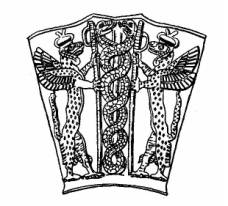 The earliest depiction of the Cadeuceus, flanked by a pair of dragons, circa 4000BC |
On exhibit in the Louvre is a green libation vase, which was excavated from the ancient Mesopotamian city of Lagash. The inscription on it, from King Gudea of Lagash circa 2025 BC, is a dedication to Ningizzida. Also on the vase is an image of two entwined snakes on a rod. Some have dated the vase as far back as 4000 B.C. The rod is most likely to be Axis Mundi, the world tree, Yggdrasil, the tree of life. Ningizzida, a fertility god, was also known as 'Lord of the Tree of Life'. He was often depicted as a serpent with a human head, and later became a god of healing and magic. His companion was Tammuz/Dumuzi, who personified the creative powers of spring [19] (like the Greek Maia).
And Ningizzida was the son of Ninazu (a.k.a Anzu or Zu) - a divine storm-bird and the personification of the southern wind and the thunderclouds. [20]
In the same era the cadeuceus was being used by the people of India to represent Kundalini - but that's another story.
Could ancient scriptures and symbols, ostensively brilliantly simple descriptions of DNA, have come from a dragon? Or were they just credited to a dragon in a myth, because dragons represent order from chaos, and symbolise terrible all-changing catastrophes?
The fifth Aztec age was initiated by the dragon Quetzalcoatl in 3,113 B.C. and is due to complete its cycle on Dec. 21, 2012. Is it just a coincidence that this happens to be the next Chinese year of the Dragon? Is this the date of the next pole shift?
A Theory
Here is a theory that combines all myths about dragons:
Between 5,000 and 12,000 years ago, an extraterrestrial force, with accompanying cosmic radiation, caused the Earth's poles to shift.
- The Norse, Greek, Aztec, Chippewa & Chinese all have flood legends which have dragons in an integral role
- The Fon and Norse legends involve the world tipping over, because of dragons
- The Norse and Babylonian flood legends involve the shifting of the stars - something that would appear to happen in a pole shift
This in turn caused a global cataclysm of floods, earthquakes, mud and volcanoes. All living things had their numbers drastically reduced. Life arose from mud. Those that survived had mutated DNA from cosmic radiation - (even today cosmic rays are the main cause of random DNA mutations). Many new species came about.
- The Fon, Norse, Babylonian, Aztec & Chinese all have creation legends involving dragons
- The Norse, Babylonian, Greek, Aztec & Chinese all have mutations appearing in their legends
Some, including dragons and unicorns, had genetic Achilles heels, which prevented them from surviving through until the modern era.
Dragons were the most monstrous of all the new species, and became the symbol of the cataclysm and the resulting mutations. After a few generations, two species of humans remained, the Neanderthals (giants) and the Nephilim (angels/gods). The Nephilim were the most changed, and they became associated with dragon symbolism. They had changed for the better, and they retained information from before the cataclysm. But they were few, and they were weak. The only way to survive was to mate with the Neanderthal giants. And to teach their offspring all they knew.
- Cecrops and Athena (Greece), Quetzalcoatl (Aztec) & Nü-Kua (China) were all dragons that introduced knowledge to their respective cultures
The ancient myths that relate to the cataclysm feature dragons and mutations, as a simplistic way of explaining what had happened. It is to their the credit of the inventors of these myths, that the underlying message has somehow managed to survive for millennia.
[*] The story of Aesculapius and his association with Hermes begins to make the story of the related symbols quite interesting. According to Greek myth, the god Apollo, in a fit of jealousy, killed his unfaithful mortal lover, a woman named Coronis (the Greek root of her name, korone, refers to a seabird, or a crow). When Apollo discovered that she was pregnant with his son, he had Hermes deliver the child while her body lay on the funeral pyre. The child was none other than Aesculapius. ( from "Caduecus" http://www.endicott-studio.com/forcaduc.html April 2002)
[17] Ch'u Chai and Winber Chai, eds. I Ching: Book of Changes, translated by James Legge (New York: University Books, Inc., 1964) ii
[18] See Tao of Chaos by Katya Walter or DNA and the I Ching by Johnson F. Yan, or "The I Ching & the Genetic Code: The Hidden Key to Life"; Martin Schonberger, ASI Publishers Inc., New York N.Y., 1979
[19] Encyclopedia.com http://www.encyclopedia.com/html/t/tammuz.asp April 2002
[20] Encyclopedia Mythica









